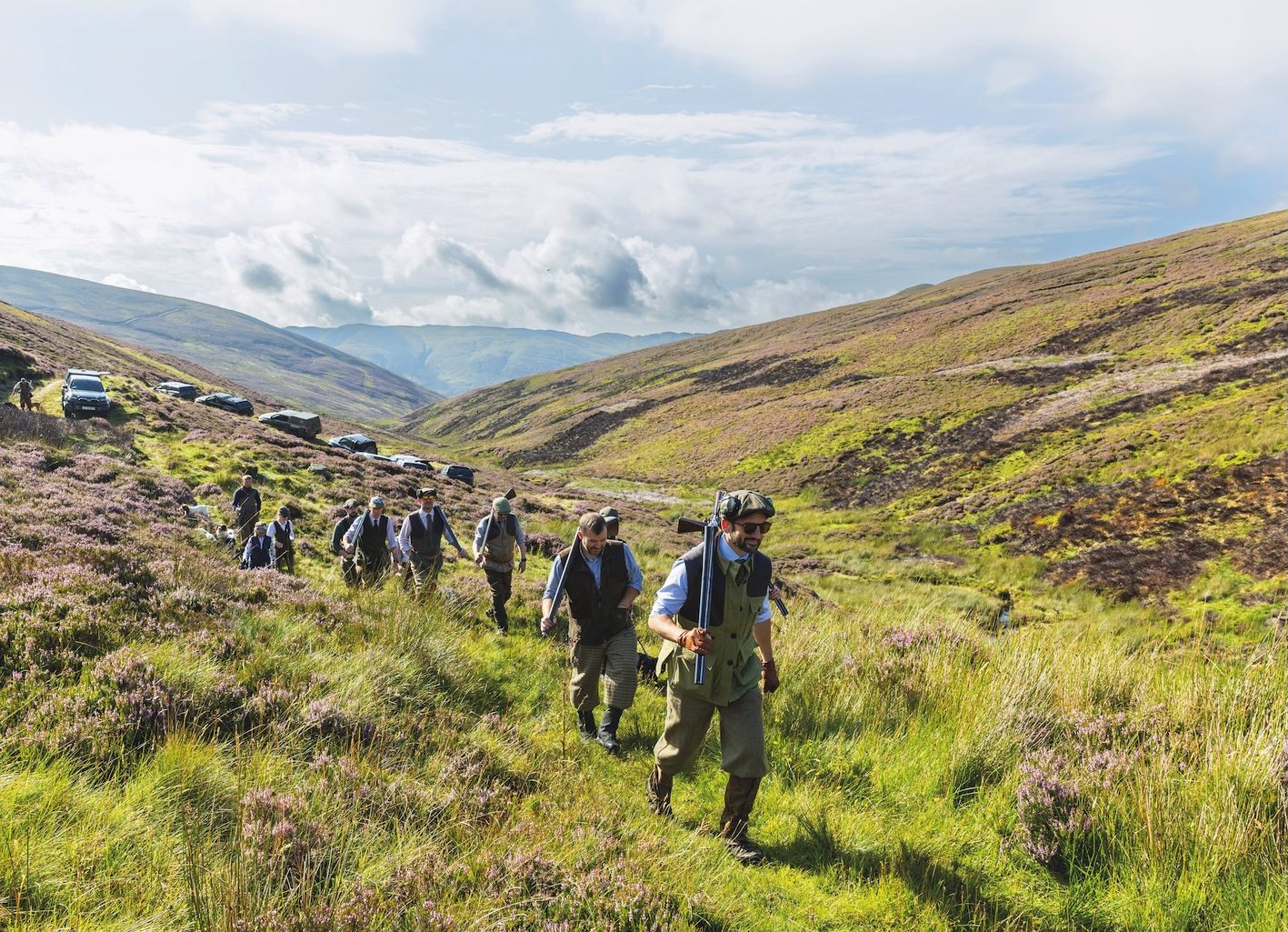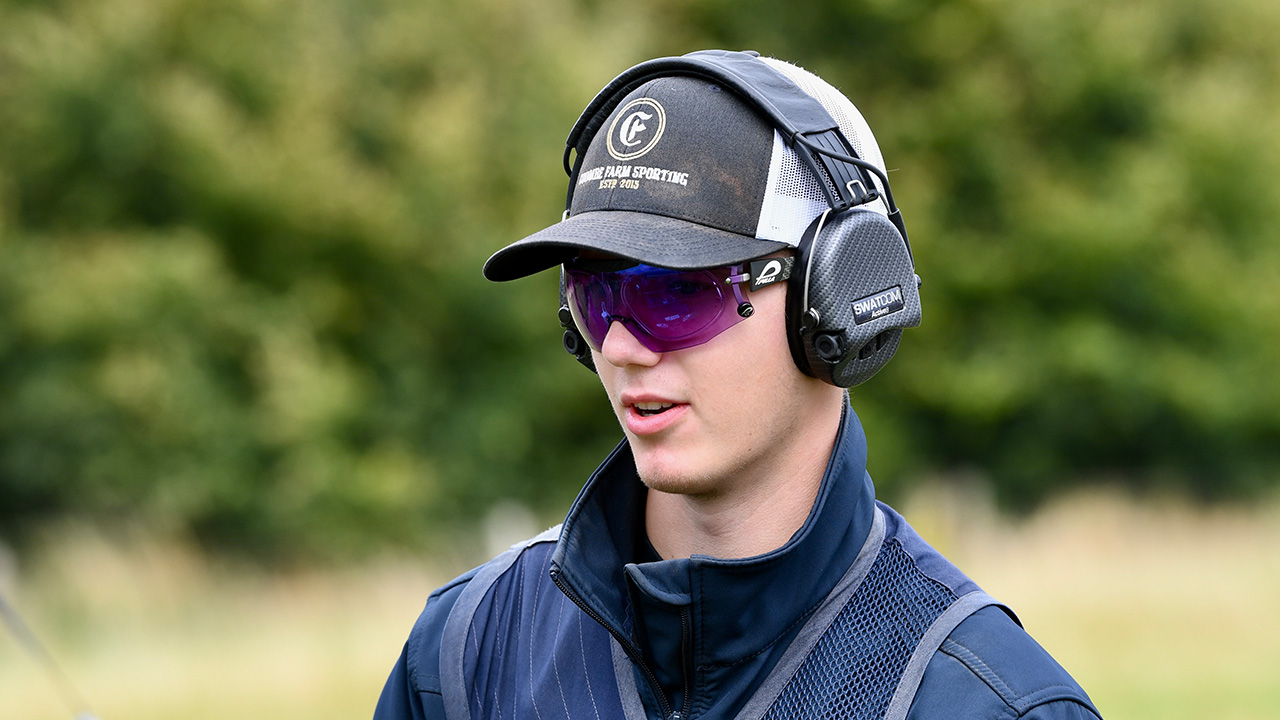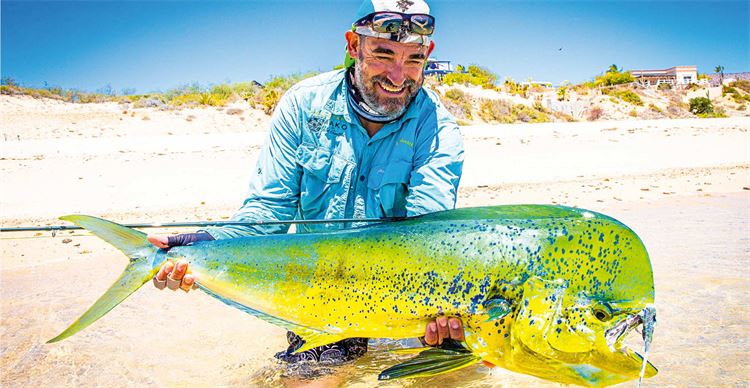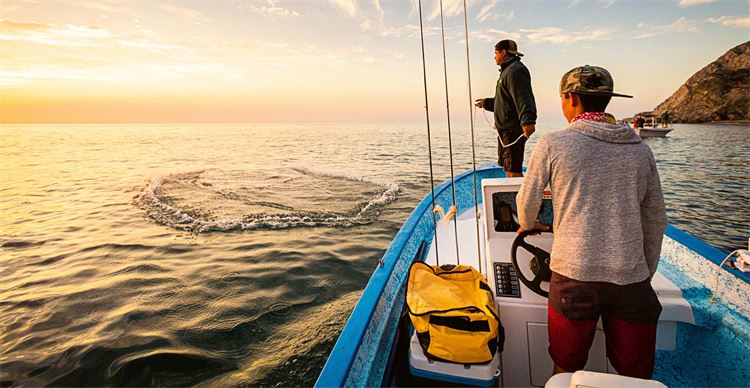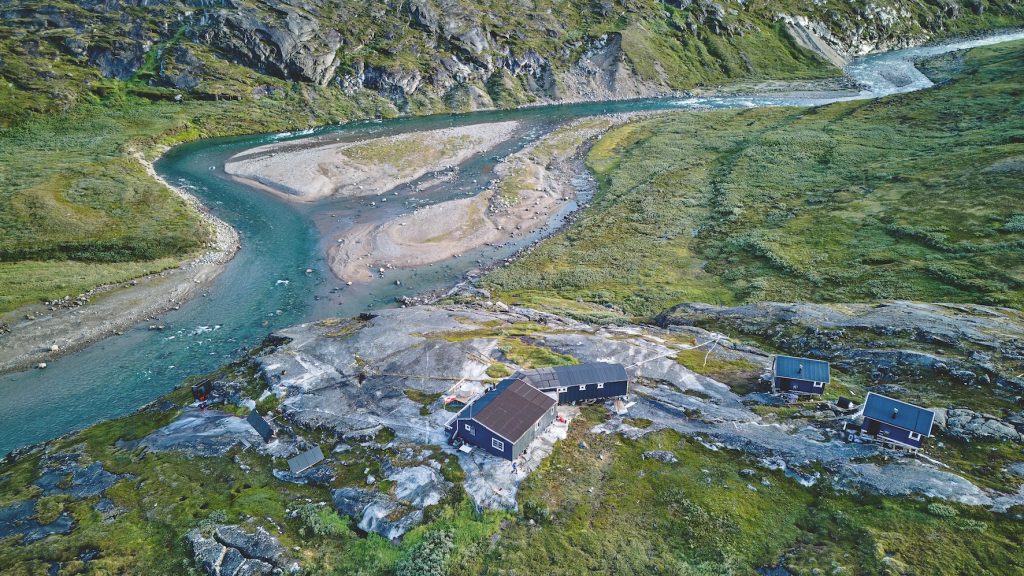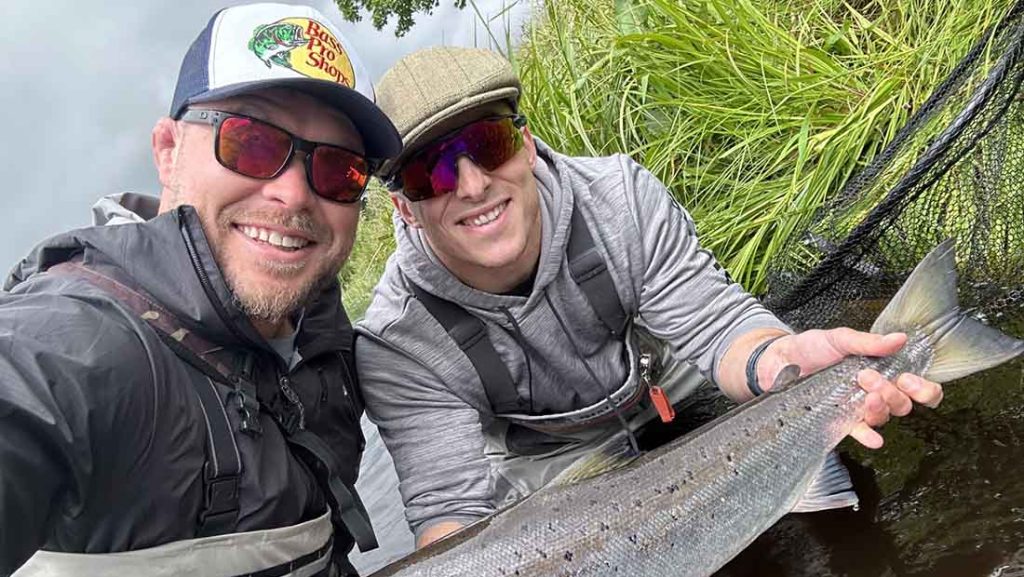Mahi Mahi on fly
Chasing the unicorns of Mexico’s Vermillion sea.
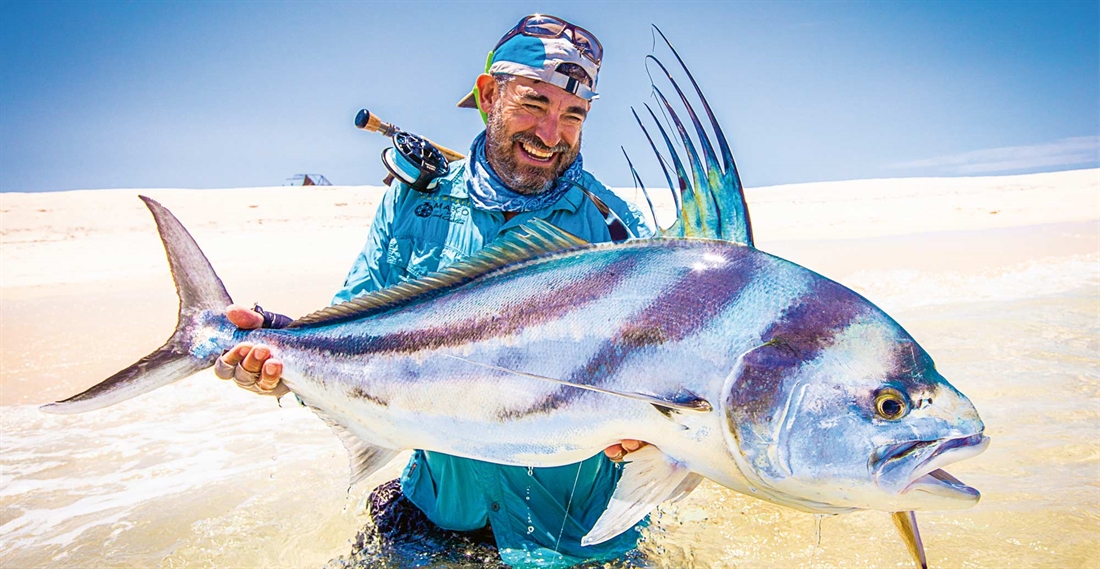
Occasionally, I have encountered creatures of the sea that have inspired me to imagine the astonishment and wonder that the first pioneering sailors, the Magellan’s and the Cabot’s and the Vasco de Gama’s, must have felt when they first encountered them.
If you’ve ever seen a squadron of flying fish suddenly emerge from the ocean and glide gracefully across the blue-black water in perfect formation, or witnessed a vast whale shark emerge majestically from the deeps, you might have an idea of what I’m talking about.
One fish that surely inspired such wonder in those early ocean-going explorers is Nematistius pectoralis – the roosterfish – and there are few fish as astonishing.
Everything from the bold zebra stripes to the outrageous dorsal fin is from some otherworldly fairytale fantasy. They really are the unicorns of the sea. To see these fish up close, demolishing a miserable balled up school of sardines, their signature coxcomb dorsal slicing through the surf as they ruthlessly hunt down one victim after another is an utterly unforgettable experience.
I’ve long wanted to tangle with one of these wonderful creatures in Mexico’s fabled Vermilion Sea – the Gulf of California to the east of the Baja peninsula. However, a number of friends have travelled there only to return jaded and empty-handed. They have warned against visiting, describing a chaotic ‘Piccadilly Circus’ of boats large and small swarming everywhere, and a beach overrun with American anglers on ATVs, stumbling over each other to gain a shot at the elusive rooster.
Then, last year, a friend of mine described a new location that she’d discovered. A place where the roosters suffered from relatively little pressure, and where the inshore waters and golden beaches were empty. A place where there was a realistic chance of a ‘grande’ – a real trophy Rooster. I had to go.
Despite a busy schedule, I managed to squeeze in four short days on the Baja peninsula this summer. I decided to split my time between walking the beach and fishing from a boat, which my friend described as being the most productive if less aesthetically pleasing method. How right she was.
Every afternoon I walked the beach. Broad golden sands and stunning aquamarine water for as far as the eye could see, and not a soul to impair the view. I traveled light, with just a rod, a wallet of flies, and a bottle of icy water. Frigate birds wheeled overhead, and the sun gleamed on the pristine waters of the Sea of Cortez. But nothing. Not even a sighting.
Compare that with the boat fishing.
My captain and guide, the irrepressible Lallo would meet me at the dock at 5am, the stars still sparkling in the clear night sky. We’d jump into his little centre-console boat and rocket across the inky waters, as the first pink rays of the dawn crept into the eastern sky. An hour off-shore, a craggy island emerges from the depths and in amongst the rocky inlets and bays, the turquoise waters are black with sardines. We’d jostle for position with the other netsmen, and then Lallo would expertly toss his cast net into a wide circle, ensnaring a vast number of silver sardines.
These baitfish were then deposited into the live well of the boat, where a powerful pump would keep them alive and well. Once the well was filled to capacity, we would gun the big Yamaha engines and head for the beaches. Around 60 yards or so offshore, the clear waters would darken, as the sandy bottom shelved steeply into the deeper water.
Lallo would set us up to drift along the edge of this drop-off and toss a constant drip-feed of live sardines into the water. Very soon, the unmistakable sight of a roosterfish’s dorsal spines came spearing up through the surface. The fish accelerated and rolled up through the surface in a blur of big black stripes to grab one of the hapless little sardines. I was instantly besotted.
But could I catch one? The roosters would chase my fly time and time again, but they were infuriatingly difficult to catch.
They seemed to prefer an ultra-fast presentation, and by putting my rod under my arm and using both hands to retrieve, hand over hand, I managed to achieve an incredibly fast retrieve that did seemed to get the roosters interested, but they invariably rejected the fly at the last minute.
By the time the sardines had run out I had nothing to show for my efforts but a blister on my thumb and cramp in my arms. I asked Lallo if we could fish on without using the live chum technique, and after around 15 minutes we watched a trio of big mahi-mahi (Coryphaena hippurus) come hustling in from the deep, busting up a school of needlefish. I cast a big popper across their path and the lead fish crashed on to the fly. I was finally in business.
We caught three big mahi-mahi in the next half an hour or so. Their fabulous, extraordinary paint-job – golden yellow spattered with blue spots straight out of a Jackson Pollock painting – had me thinking about those pioneering sailors again and their spectacular acrobatics were hugely exhilarating. One of them was also delicious.
However, as I sat outside my lovely little beachside apartment, gazing out to sea and enjoying an icy Dos Equis beer and the fish taco I’d cooked up as the sunset behind the little town, I knew that the mahi-mahi were only a consolation. I just had to catch a roosterfish before I left.
The next two days were impossibly frustrating. An unseasonably strong wind got up and made fly fishing almost impossible. Lallo did his best, and I somehow made casts by kneeling on the deck, but the fish were hunkered down and off the feed. Lallo told me that we were wasting our time, and he told me not to bother walking the beach in the afternoons, but I wasn’t to be deterred.
He was right, of course. As I walked back towards the little town on my penultimate day after yet another fruitless five-mile trek along the beach, I watched the kite surfers flipping somersaults far out on the white-capped waves. I cursed my luck. One day left, and it looked as if the weather was going to destroy my chances of catching the fish of my dreams.
I woke early on the last day at 4:30am. The stars twinkled in the clear sky, and the picture-postcard bay beyond my window was unruffled by even the faintest gust of wind.
I was waiting for Lallo when he arrived at the boat ramp, and we went rocketing out to the island one last time, joinedby his likeable young apprentice, Juan. With the live-well soon bulging, we headed for the beach.
Lallo told me that with little wind to trouble us, he would take me to a new spot, a deserted beach far to the south. Others had had the same idea, and as we approached a few other boats were already jostling for position. Lallo drove us beyond the other boats, and we settled into a long drift that took us parallel to the endless golden beach.
At first, the live sardines that Lallo and Juan tossed into the water adjacent to the beach went unmolested. I waited on the bow, bearing into the blue waters and silently pleading for a shot. Then they were suddenly there.
“Mira!! Pez Gallos!! Grandes!!!” Lallo hollered, and I was looking at two huge roosterfish – both surely 70lbs and more – crashing onto the sardines. I made a perfect shot, and for a moment, one of the huge fish was onto the fly, tracking it aggressively, its huge coxcomb slicing up through the surface. My heart was beating hard, and I retrieved the fly for all I was worth.
And then, nothing. The fish did what every rooster I’d cast at did, and simply sheered off, leaving me fishless and frustrated once more.
The next two hours were perhaps the most frustrating that I have ever experienced as a fly fisherman. Any number of roosters came to the sardines, yet every fly I cast at them was met with utter disdain. As the last of the sardines went into the surf, I was just about ready to throw in the towel. Most of the other boats had already departed and I was pretty much resigned to leaving the Baja without my coveted rooster.
Then, I had an idea. I did a little horse-trading with Lallo and persuaded him to extend our day in return for a generous additional fee. While Lallo drove us back to the island to catch more sardines, I went through my fly collection, looking for inspiration. One pattern caught my eye. It was a classic roosterfish pattern, the ‘Gym Sock’, tied by my good mate Alex Wilkie. Alex is a brilliant fisherman, and he is extremely particular about his fly patterns. He swears by the ‘Gym Sock’.
In the water, the fly had a wonderful three-dimensional quality, and it tracked perfectly even when retrieved ultra fast. As soon as I saw it in the water, I felt a rush of optimism.
As we approached the beach, My heart leapt as I saw that all the other boats had left and that we had the place to ourselves.
Lallo started to toss in the sardines and very soon, the water was alive with big brawny jack crevalle, a million needlefish and, yes, some big roosters.
One rooster grabbed my attention. He was especially aggressive, wolfing down the sardines before even the voracious jacks could get to them. He was the one I had been looking for.
I waited until he came just within range, and sent out one of the best casts of my life, every last inch of the fly line, and two yards in front of my target. I jammed the rod under my arm and retrieved as fast as I could.
The fish turned onto the fly and its big dorsal came knifing up through the surface. I kept the retrieve coming at maximum speed and in a magical moment, the big rooster burst up through the surface and inhaled the fly. I jabbed the rod back hard and made three savage strip-sets. The running line fizzed up off of the deck and then I watched dumbstruck as the fish rocketed out to sea.
Roosters don’t jump, but they are incredibly powerful. This one was no exception, and for long minutes, the fish seemed utterly indomitable. I have never wanted to land a fish more than this one, and my heart was in my mouth as the fish skulked deep down. Slowly, however, the battle started to turn in my favour. The powerful runs started to subside into a dogged brawl, and the fish was now clearly visible a few yards down. Lallo eased the boat into the shallows, and we jumped into the surf.
After what seemed an eternity, I drew the fish into the shallows. Lallo crept up stealthily and suddenly he had the rooster by the tail. He was cheering, Juan was cheering and yes, I was cheering too. I rushed over to my friend and hugged him hard.
Only then did I look down at the roosterfish – my roosterfish. I’ll never forget that sight as long as I live. Forty pounds, and as rare and as precious as a unicorn – the most beautiful fish I have ever seen in my life.
If you want to fish the Baja, contact Matt at mattharris@mattharris.com
Related Articles
Get the latest news delivered direct to your door
Subscribe to Fieldsports Journal
Elevate your experience in the field with a subscription to Fieldsports Journal, the premium publication for passionate country sports enthusiasts. This bi-monthly journal delivers unparalleled coverage of game shooting, fishing and big game across the UK and beyond.
Each issue offers a stunning collection of in-depth features, expert opinions and world-class photography, all presented in a timeless yet contemporary design.
Save 10% on shop price when you subscribe, with a choice of packages that work for you. Choose from Print & Digital or Digital only with each journal delivered directly to your door or via the app every other month, plus access to past issues with the digital back issue library.



